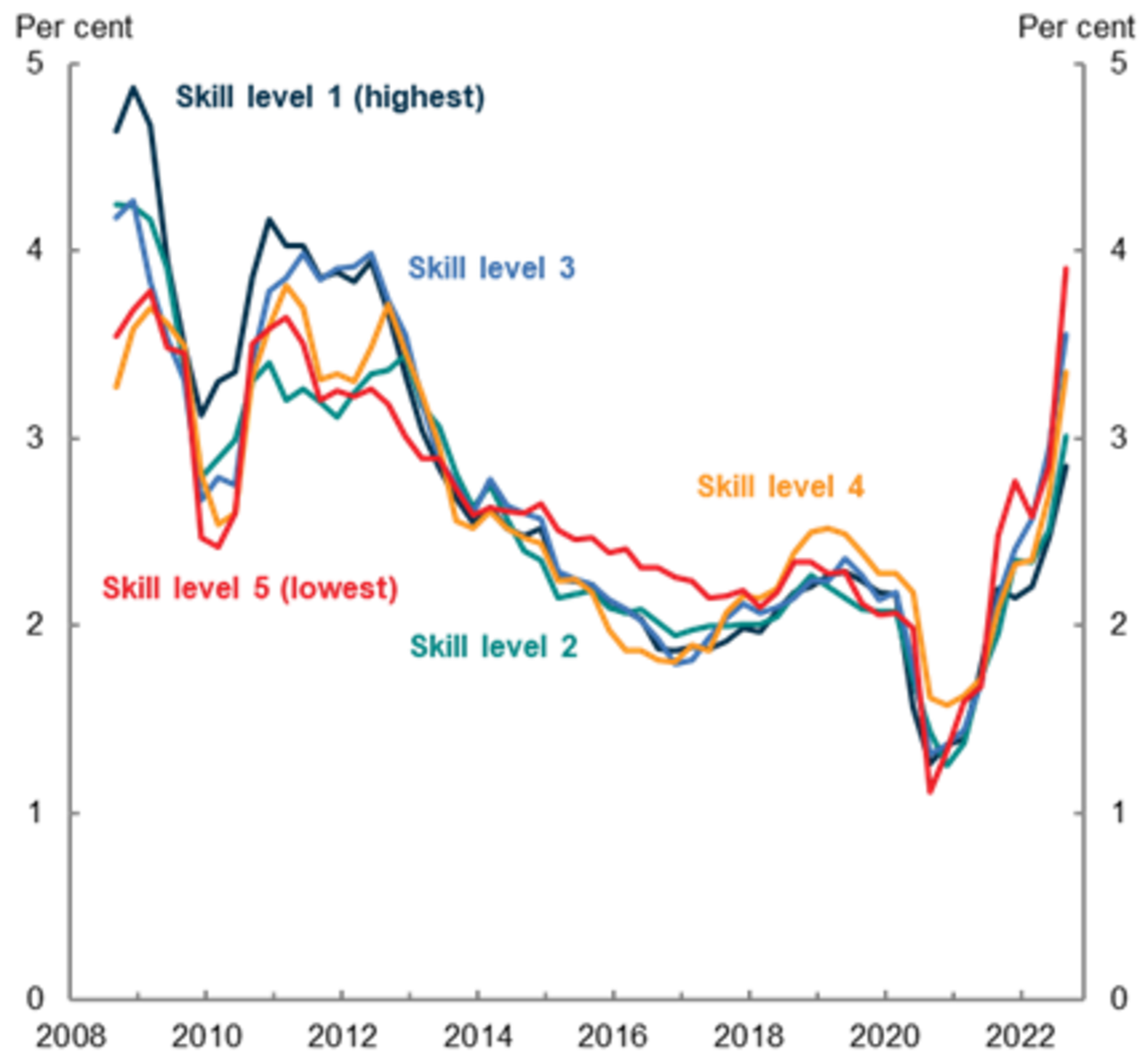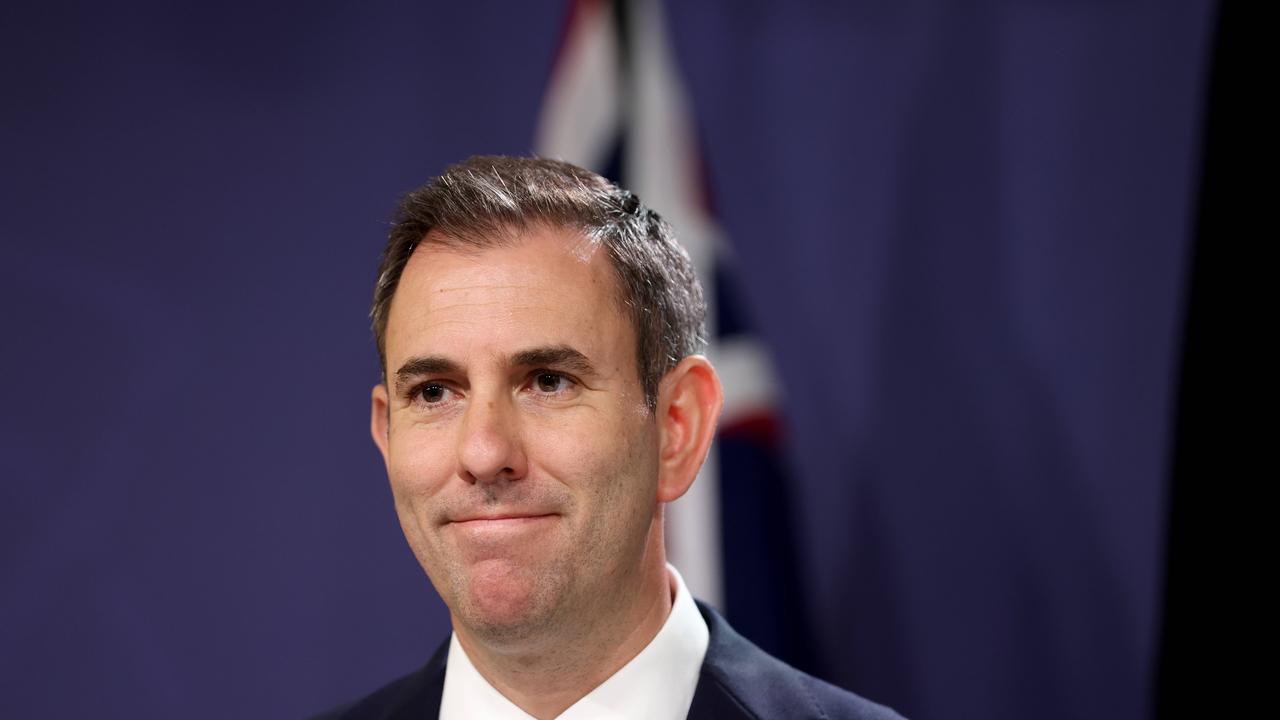Tight labour market drives rapid wages growth, but real pay not set to rise until 2024
Wages are growing at their fastest rate in nearly a decade but many Australians won’t see their real pay increase just yet.
Wages are growing at their fastest rate in nearly a decade but the cost of living means Australians will probably have to wait until next year to see their pay increase in real terms.
The federal government on Tuesday released Treasury analysis of Australian Bureau of Statistics data showing wages grew by 3.1 per cent in the year to the September quarter.
The increase is the fastest through-the-year growth rate since the March quarter of 2013 and well above the annual average growth rate over the past five years of 2.2 per cent.
Wages for low-skilled workers grew by 2.3 per cent in the September quarter – faster than in any quarter since the global financial crisis.
But real wages are still going backwards as they remain below the annual rate of inflation of 7.3 per cent.

Treasurer Jim Chalmers said real wages growth is expected in 2024 as inflation moderates over the next 12 months from its expected peak in December.
Speaking to the ABC after Labor released the Treasury analysis on Tuesday, Dr Chalmers said the government was forecasting inflation to recede but to be “higher than we’d like for long than we’d like”.
He said Labor’s economic plan to get wages growing – including its industrial relations reforms – was already starting to work.
“The best way to deal with cost of living pressures is to help ensure ordinary Australian workers can earn enough to provide for their loved ones and get ahead,” he said.
Dr Chalmers said wages growth for lower-skilled occupations had been boosted by the Fair Work Commission’s decision to increase the minimum wage – which Labor supported.
Economists are also expecting real wages to start growing again in 2024 when workers’ raises eventually outstrip the cost of living as inflation falls gradually.

But AMP Capital chief economist Shane Oliver said the recent rapid increase in wages should be attributed to Australia’s very tight labour market rather than government policy.
“Right now there’s about one job vacancy for every person unemployed. It’s rare that that would be the case. It gives people with jobs more bargaining power,” he said.
“The return of foreign workers will eventually put a damper on wages growth.”
Deloitte Access Economics partner Stephen Smith also attributed most of the recent boost to wages to strength in the labour market.
“We’ve got record low unemployment and the pandemic showed us that when you close international borders and stop the growth in labour force … demand outstrips supply,” he said.
“And that’s putting upward pressure on wages at the moment.”
The Albanese government in September announced it would lift Australia’s permanent migration cap to 195,000 places in a bid to ease workforce shortages.
Mr Smith said with unemployment so low, Australia could add to the supply of workers without causing too much of a disruption to the improvement in wages growth.
But Mr Oliver said he thought an increase in migration would eventually put a dampener on wages growth as an increase in workers made the jobs market less competitive for employers.



